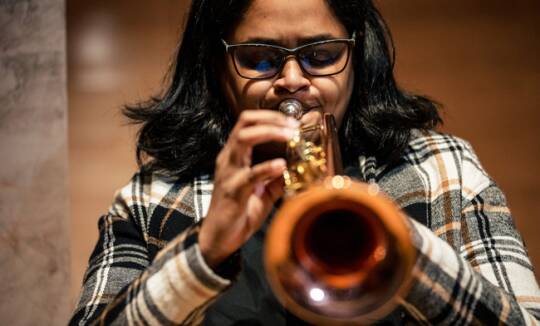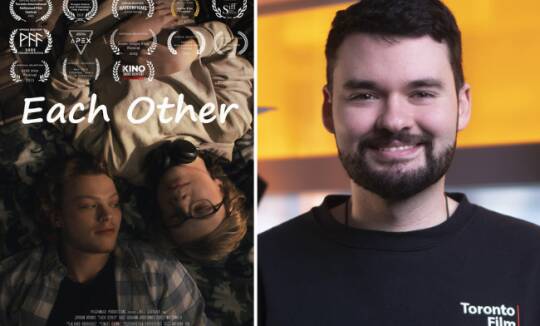From jailcells and vaults, to arched windows and staircases – Amy Bagshaw’s latest fibre art installation project aims to instill a sense of artful discovery in new and unusual places.
On display at the Orillia Museum of Art and History until May 9, Bagshaw said the Art Interruptions Project’s aims are threefold: to ‘playfully engage’ with audiences through the project’s installation process and its final works; to remind viewers of the specific relationships born between works of art and their layered and meaningful contexts; and to draw attention to the museum’s unique place in a pandemic world.
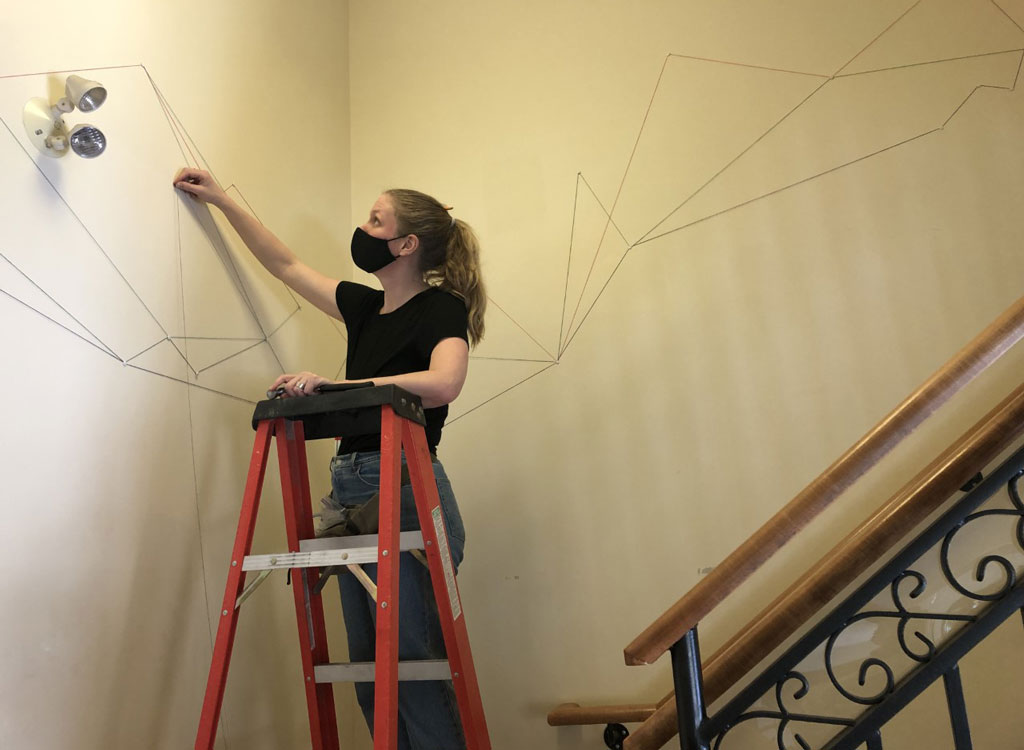
“When I think about my goals, I keep coming back to the word ‘playful’. I want there to be a sense of discovery when people come see Art Interruptions – discovery of new spaces, yes, but also of familiar spaces observed in new and different ways,” said Bagshaw, a Bachelor of Interior Design professor at Yorkville University.
“My intention, as well, is to help support the museum and gallery itself – engaging with community, bringing more people in to think about the space in ways that maybe they never would have pre-pandemic, and helping unpack this elite or distant stereotype that a lot of museums and galleries have.”
To help facilitate those desired levels of engagement, Bagshaw chose to pull back the curtain and install Art Interruptions during the Orillia Museum of Art and History’s public hours over the course of four weeks from late January to mid-February.
“I think viewers aren’t always used to having an artist on site installing – usually that’s the magic and mystery that happens in off hours,” Bagshaw said of the experience, noting that the idea to install her pieces in public was born of a similar experience constructing a site-specific installation in her front yard during the start of the pandemic.
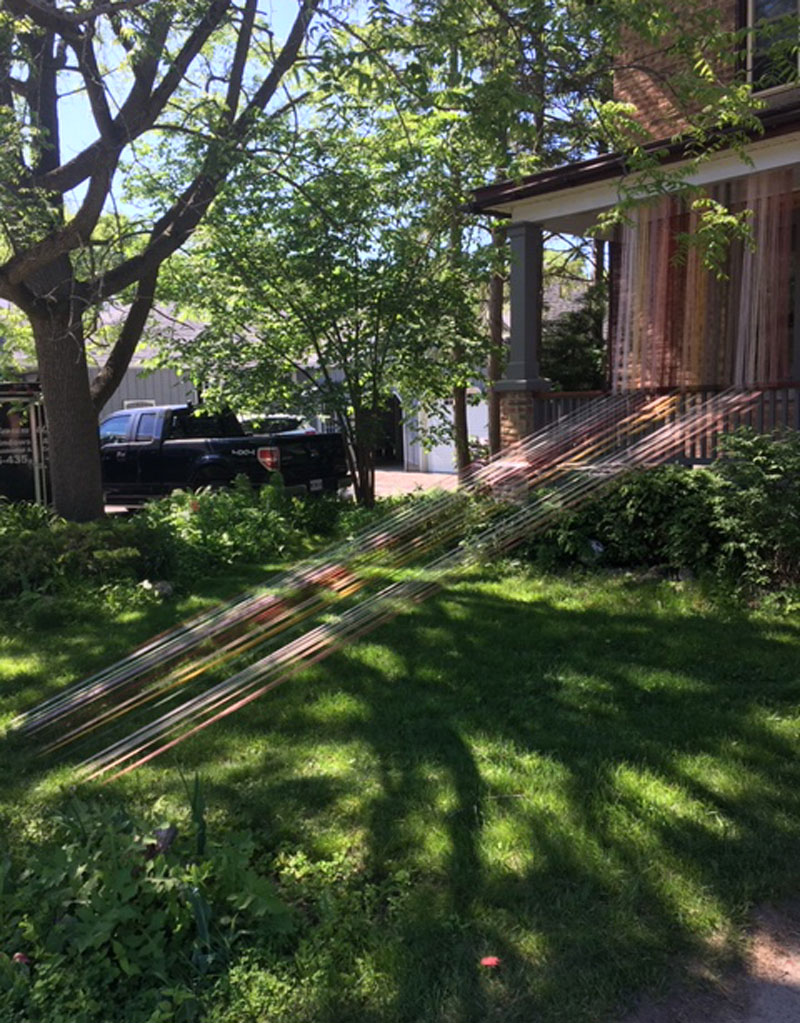
“I wanted to recreate that experience at the museum, and it was really great. Every conversation was different. I was there this week chatting with a gentleman who about how I’m making it, I’ve talked to a little three year old who was playing around in the space while I was installing it, and I’ve answered questions from the teens coming through with their school groups. So, there’s a lot of interaction with people I would not have met otherwise.”
And that, Bagshaw said, is an important part of the work – that it’s not isolated; that its audiences are thinking of the relationship between the artist and the viewer, between the art and the process, and between the artist and the site.
For Bagshaw, the latter relationship was a significant one. Having previously exhibited that the Orillia Museum of Art and History in a several group shows, she was familiar with the historic building’s unique, Richardsonian Romanesque Revival design and was keen to showcase its transitional spaces with her work.
“The museum was built in the late 1800s and its architecture is really unusual. It was used as a post office, then it was used as a jail, and for the last 20 years, it’s been converted to an art gallery,” she explained.
“So, it has these remarkable spaces – it has this big vault that was used in the post office, it has jail cells in the basement, it has all the quintessential, Romanesque Revivalist round arches in the windows. I wanted to draw attention to these spaces by doing four installations – or art interruptions – to interrupt the space as we normally see it.”
Each of Bagshaw’s four installations utilizes the cotton warp thread she uses in her work in slightly different ways, she said.
The Stairwell
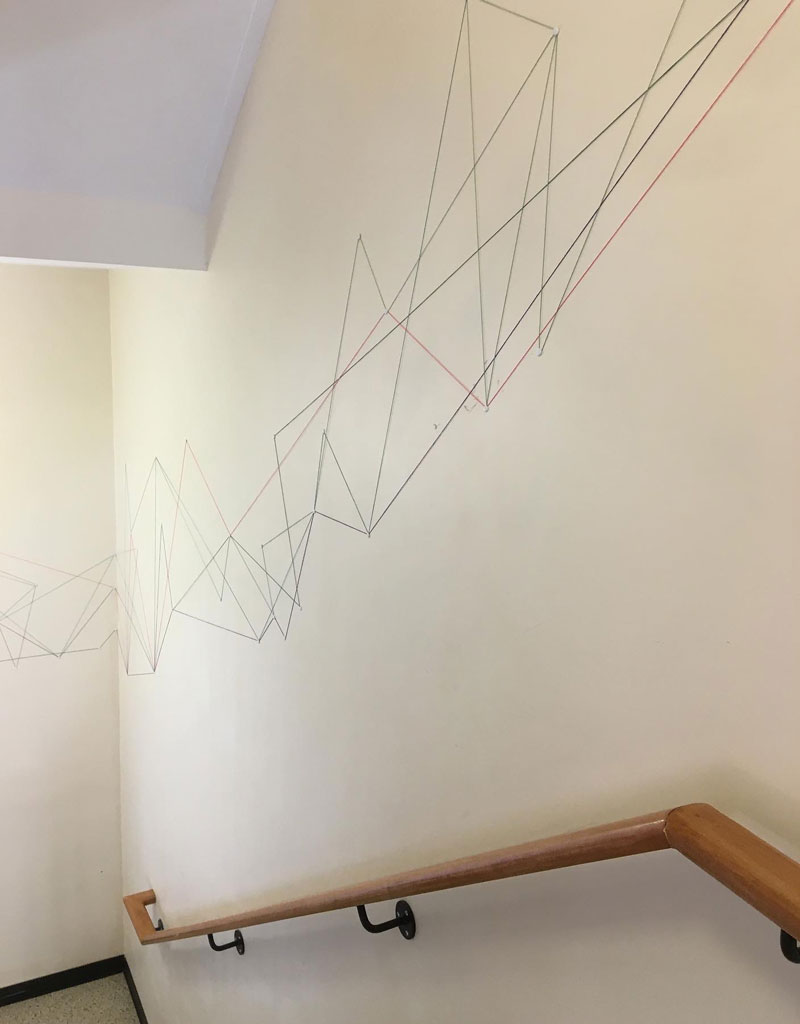
“In the stairwell, the fibre almost looks like lines being drawn on the walls in very geometric forms and shapes that lead you up through the stairs and up through the space.”
The Vault
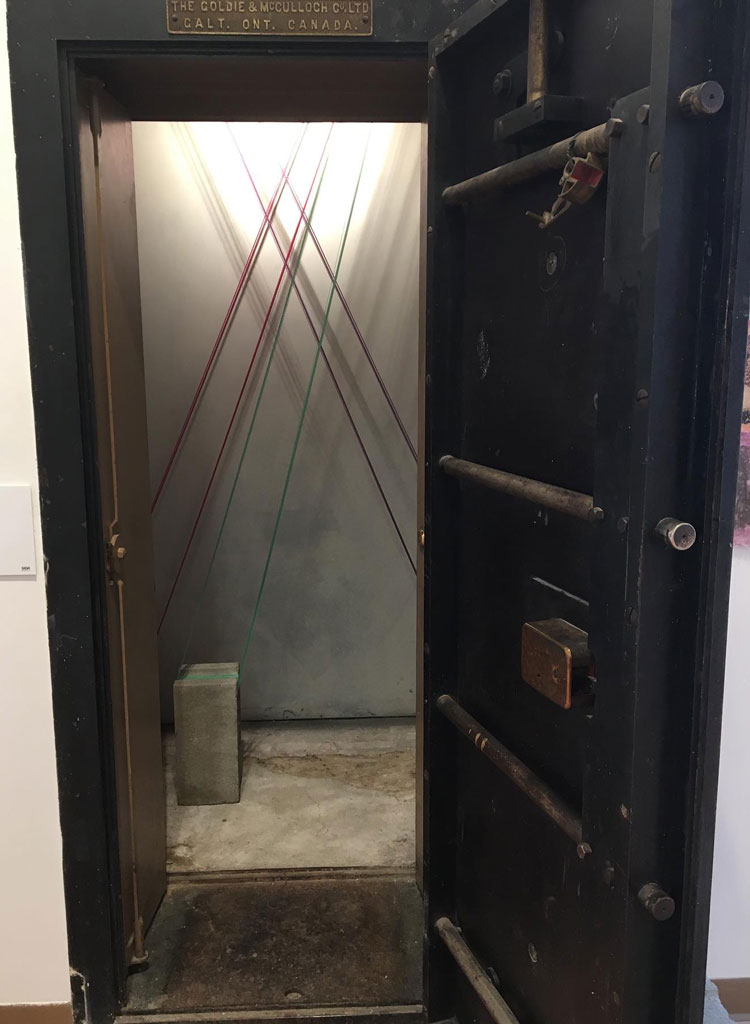
“In the vault, I was wrapping the fibre around these pipes that are maybe 10 or 12 feet off the ground, and then attaching them to cement blocks on the floor,– so they’re grounded by the cement blocks. The space is also completely cement, so with that installation I was thinking about the juxtaposition between that sort of soft material and the coolness of the building material itself.”
The Hallway
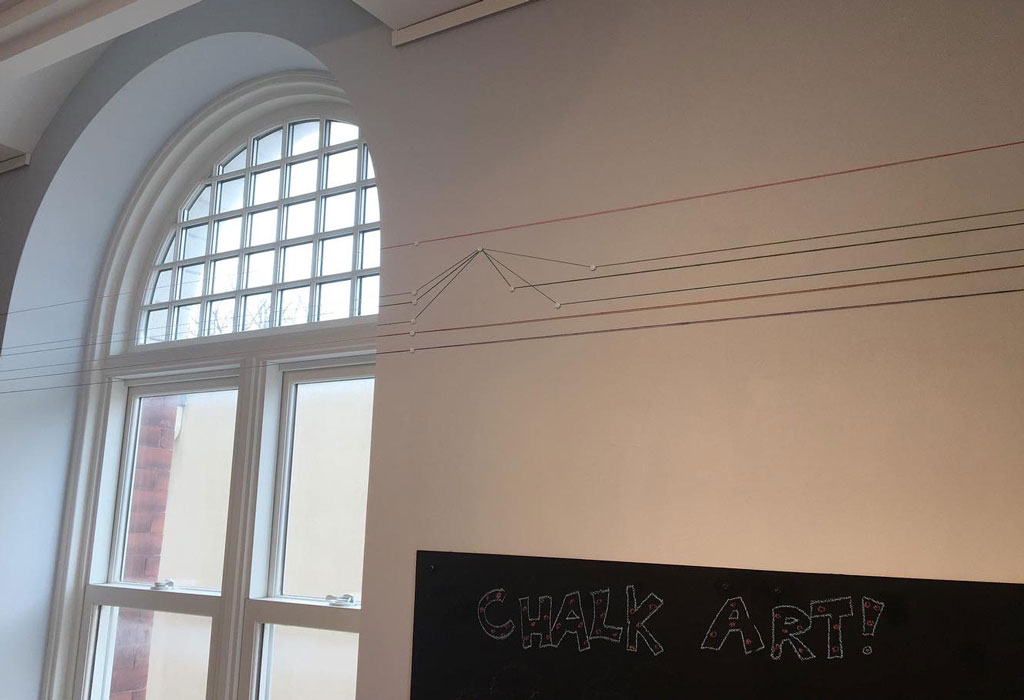
“The hallway installation in similar to the stairwell one, where I was using the string to kind of map out the space directly on the wall. But it’s different in the sense that it’s connected directly to the window and the arches, so it forces the viewer to look up at how the thread is going in front of the window, and the roundness of the arch. There’s a play there between the material and the space, both the walls and the window, and, as always, the ephemeral aspects of shadow.”
The Jailcell
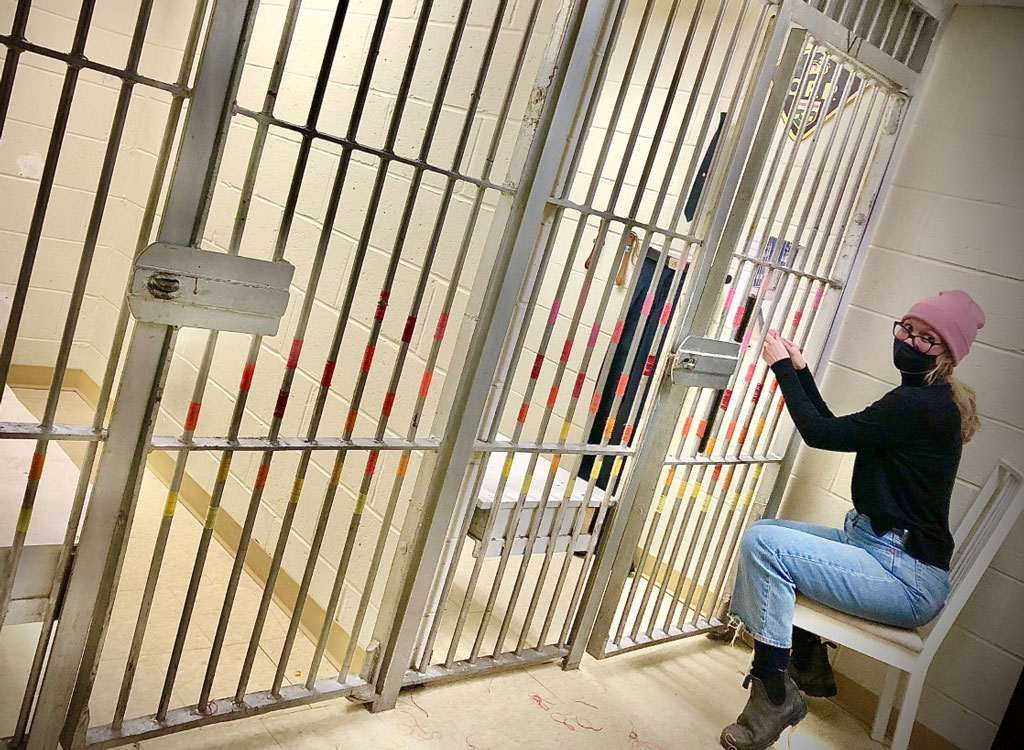
“In the jailcell, I took the fibre thread and wrapped different coloured, two-inch ‘bandages’ around the bars of the jailcell doors…almost like how you’d wrap a wound, but again, with colour. Colour is an important part of this piece and all of the pieces. The colour is a way to juxtapose the rather plain areas I am installing in.”
Bagshaw said her ultimate hope with Art Interruptions going forward is to share it with different galleries, so that she has the opportunity to engage with different architectures and communities.
“The idea is to repeat this project at other galleries and museums, too,” she said. “My hope is that the Art Interruptions Project will have a life beyond the Orillia Museum.”
For more information about the Art Interruptions Project, which received a grant from Yorkville’s Support for Scholarly Activities Fund, click here.
More About Amy Bagshaw:

Amy Bagshaw earned her Bachelor of Fine Arts from Queen’s University in 2002, and Master of Fine Arts from Stony Brook University, New York, with a focus on fibre installation and intermedia in 2006. A graduate Women’s Studies scholar, her art practice extends to intersectional feminism and contemporary craft practices. She has exhibited in Canada, the United States, and Europe and has created public art for the City of Barrie and Alliston, ON. Bagshaw has received an Ontario Arts Council Grant, has had a residency at the Banff Centre and her work can be seen on the cover of Feminist Time Against Nation Time (Dietrich and Hesford, 2008) and Brava Kilo’s album cover Hang On, You Demons (2018). Her paper ‘Notes from the Portal: Feminist Teaching Strategies in/post-pandemic Art and Design Classrooms,’ was published in Teaching in a Post-COVID Era (Springer, 2021). She teaches in the Fine Art and IDesign departments of Yorkville University, X University (Ryerson), and Georgian College. She lives in Alliston, Ontario with her family.



